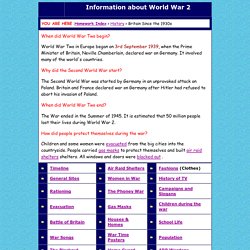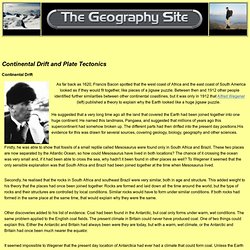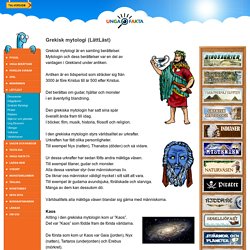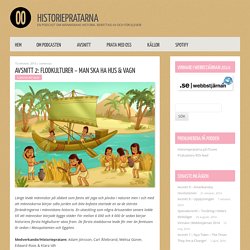

The 25 Biggest Turning Points in Earth's History. World War II: An Overview. It was the bloodiest, deadliest war the world had ever seen.

More than 38 million people died, many of them innocent civilians. It also was the most destructive war in history. Fighting raged in many parts of the world. More than 50 nations took part in the war, which changed the world forever. For Americans, World War II had a clear-cut purpose. In Asia and the Pacific, Japanese armies invaded country after country, island after island. World War 2 for Kids. When did World War Two begin?

World War Two in Europe began on 3rd September 1939, when the Prime Minister of Britain, Neville Chamberlain, declared war on Germany. It involved many of the world's countries. Meganeura - Giant Dragonfly. Meganeura spp. Meganeura spp.

Temporal range: 305–299Ma Late Carboniferous Scientific classificationKingdom: AnimaliaPhylum: ArthropodaClass: InsectaSuperorder: OdonatopteraOrder: MeganisopteraFamily: MeganeuridaeGenus: MeganeuraSpecies:Meganeura brongniartiMeganeura monyiMeganeura vischerae Meganeura is a genus of extinct insects from the Carboniferous period approximately 300 million years ago, which resembled and are related to the present-day dragonflies.
With wingspans of up to 65 cm (25.6 in), M. monyi is one of the largest known flying insect species; the Permian Meganeuropsis permiana is another. Meganeura were predatory, and fed on other insects, and even small amphibians. SizeControversy has prevailed as to how insects of the Carboniferous period were able to grow so large. Life Before the Dinosaurs: Meganeura. Meganeura was a genus of huge griffinfly (a griffinfly is similar to a dragonfly, but much bigger), which lived during the Carboniferous Period. It had a wingspan of about 2-1/2 feet and probably ate animals such as other flying insects and probably some small amphibians and reptiles. Fossils of Meganeura have been found in North America, France, and Great Britain.
Meganeura means "big nerves," referring to the veins in its wings. Kom med till Istiden. Dino. Lättläst om Historia. Rena rama forntiden: Runor. Det var en gång...Tidernas äventyr Del 1 - Jorden blir till.
History of Man. Geography Site: Plate Tectonics. Continental Drift and Plate Tectonics Continental Drift As far back as 1620, Francis Bacon spotted that the west coast of Africa and the east coast of South America looked as if they would fit together, like pieces of a jigsaw puzzle.

Between then and 1912 other people identified further similarities between other continental coastlines, but it was only in 1912 that Alfred Wegener (left) published a theory to explain why the Earth looked like a huge jigsaw puzzle. He suggested that a very long time ago all the land that covered the Earth had been joined together into one huge continent. He named this landmass, Pangaea, and suggested that millions of years ago this supercontinent had somehow broken up. Firstly, he was able to show that fossils of a small reptile called Mesosaurus were found only in South Africa and Brazil. Secondly, he realised that the rocks in South Africa and southeast Brazil were very similar, both in age and structure. Other discoveries added to his list of evidence. HamerTech - Plate Tectonics. Pangaea & Plate Tectonics. PP Huginhös test. World War II: Crash Course World History #38. World War 2 for Kids.
World War 2. WWII History: World War II for Kids. World War II was fought between the Axis Powers (Germany, Italy, Japan) and the Allied Powers (Britain, United States, Soviet Union, France).

Most of the countries in the world were involved in some way. It was the deadliest war in all of human history with around 70 million people killed. Grekisk mytologi (LättLäst) Grekisk mytologi (LättLäst) Grekisk mytologi är en samling berättelser.

Mytologin och dess berättelser var en del avvardagen i Grekland under antiken. Schools - Primary History. Lättläst om Historia. Films from the Home Front. You Wouldn't Want To Be A Roman Gladiator! You Wouldn't Want To Be An Egyptian Mummy! ISTID. 20 Wonderful Online Museums and Sites for Virtual Field Trips to Use in Class. January 27, 2014 Yesterday when I was working on the list of iPad apps that teachers can use with their students to make virtual field trips, it dawned on me to compile another list of web based platforms for both online museums and virtual field sites that can be used with students in class.

After scouring the web for hours I finally landed on the selection below. Have a look and as always share with your students and colleagues. 1- National Portrait Gallery The Smithsonian’s National Portrait Gallery tells the history of America through individuals who have shaped its culture. Through the visual arts, performing arts and new media, the Portrait Gallery portrays poets and presidents, visionaries and villains, actors and activists whose lives tell the American story. 2- Smithsonian Museums The Smithsonian Institution—the world’s largest museum and research complex—includes 19 museums and galleries and the National Zoological Park. 3- The Field Museum 5- The British Museum 6- Science Museum.
Avsnitt 2: Flodkulturer – Man ska ha hus & vagn. Länge levde människor på sådant som fanns att jaga och plocka i naturen men i och med att människorna börjar odla jorden och blev bofasta startade en av de största förändringarna i människans historia.

En utveckling som några årtusenden senare ledde till att människor började bygga städer För mellan 6 000 och 4 000 år sedan börjar historiens första högkulturer växa fram. De första stadsborna levde för mer än femtusen år sedan i Mesopotamien och Egypten. Medverkande/Historiepratare: Adam Jönsson, Carl Ållebrand, Melisa Güner, Edward Roos & Klara Idh Lyssna på programmet här direkt.